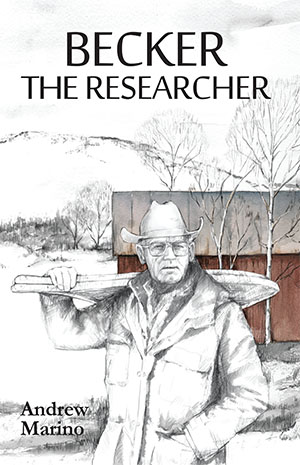Robert O. Becker’s biological research, some of the most deeply probing of the 20th century, grew directly from two closely related questions that few have dared to ask, much less base a major research effort on answering them: 1) what is the difference between living and dead? and 2) how does self-healing occur, so that the organism stays alive? That Becker asked these questions was determined, in large part, by his decision to become a doctor.
His unusually strong purpose to heal and protect drove his research decisions to investigate biological regeneration and to study the detrimental effects of electromagnetic fields (EMFs). He discovered the voltages that humans shared with regenerating salamanders, and that would finally be understood, in his brilliant insight and reasoning, as the sign of internal currents that controlled self-healing and growth and even biological rhythms.
Becker’s strength of purpose as a doctor encouraged him above all to work for the replacement of reductionist, part-by-part biology, with a systemic view of the organism that would recognize and make use of the body’s ability to heal itself, and such holism was a direct threat to established biological wisdom. Some of the gravely irritating disputes he had with nonmedical scientists, especially physicists, can perhaps be understood as conflicts with people driven by very different purposes (or hardly driven, except by untethered curiosity or, even worse, careerism).
He made missteps and was temporarily derailed more than once, but the picture he developed of how life persisted within the organism by means of internal electromagnetic controls became more and more inclusively and convincingly articulated. The research history as recounted herein by Becker’s colleague and most ardent and accomplished student, Andrew Marino, constitutes a thrilling intellectual adventure. (See especially Chapter 4 for one of the great narratives of science-in-the-making.)
His research connected humans to the natural electromagnetic environment, and that insight led to a recognition that exposure to unregulated artificial EMFs—indeed, including those used in medicine by some of his colleagues—might be hazardous. Becker’s determined involvement in the public disputes that followed angered many powerful people and, finally, they assured that his medical and biological research would not continue.
In 1980 he lost all funding and his dual search for a new view of human biology and a new role for medicine ended. This book is the story of a tragedy in the classical sense; certain of Becker’s personality traits that made for great strengths as a researcher became, in a new atmosphere of contention and threat, mortal flaws that he could not correct in order to save himself and his work.
Though he published and spoke widely, his insights were too challenging for the establishment to accept, and his 20-year effort, instead of inspiring a new generation of researchers, resounded as though in an empty room. His discoveries and insights yet remain to be elaborated and championed.
Readers will see that Becker’s tragic flaws—they might be summed up as a kind of principled stubbornness—repeatedly undermined the reception of his basic research, as we infer when Marino several times patiently offers heartfelt and intelligent tactical advice that Becker rejects out of hand. These are painful sections to read. They are urgings for Becker to become, in effect, a different person, and they are vainly proffered.
Marino’s gripping narrative fully documents one of the most important research efforts of the past century. It proceeds forcefully from multiple evolving tensions to describe a heroic quest in an unheroic time.
Joel Ray

